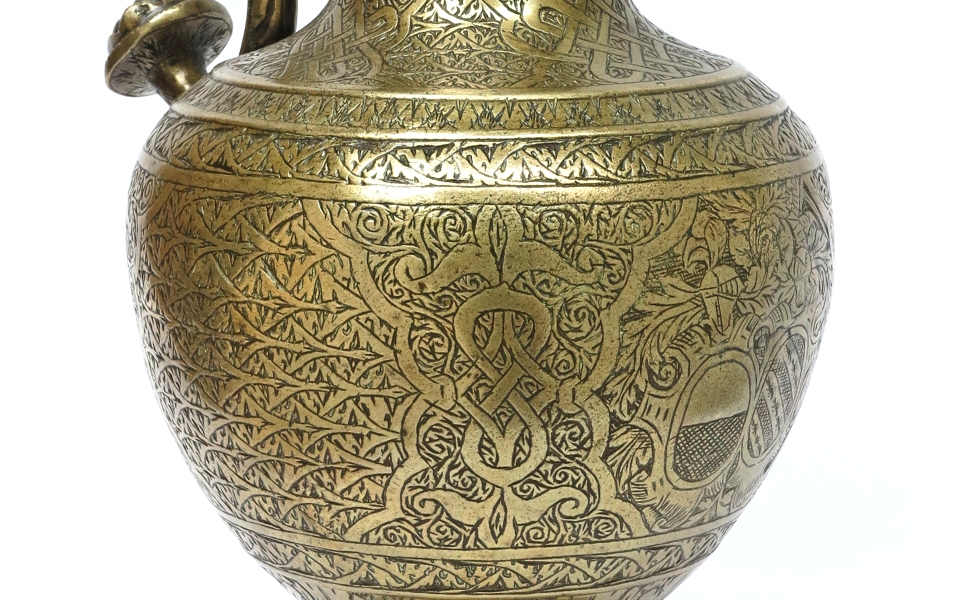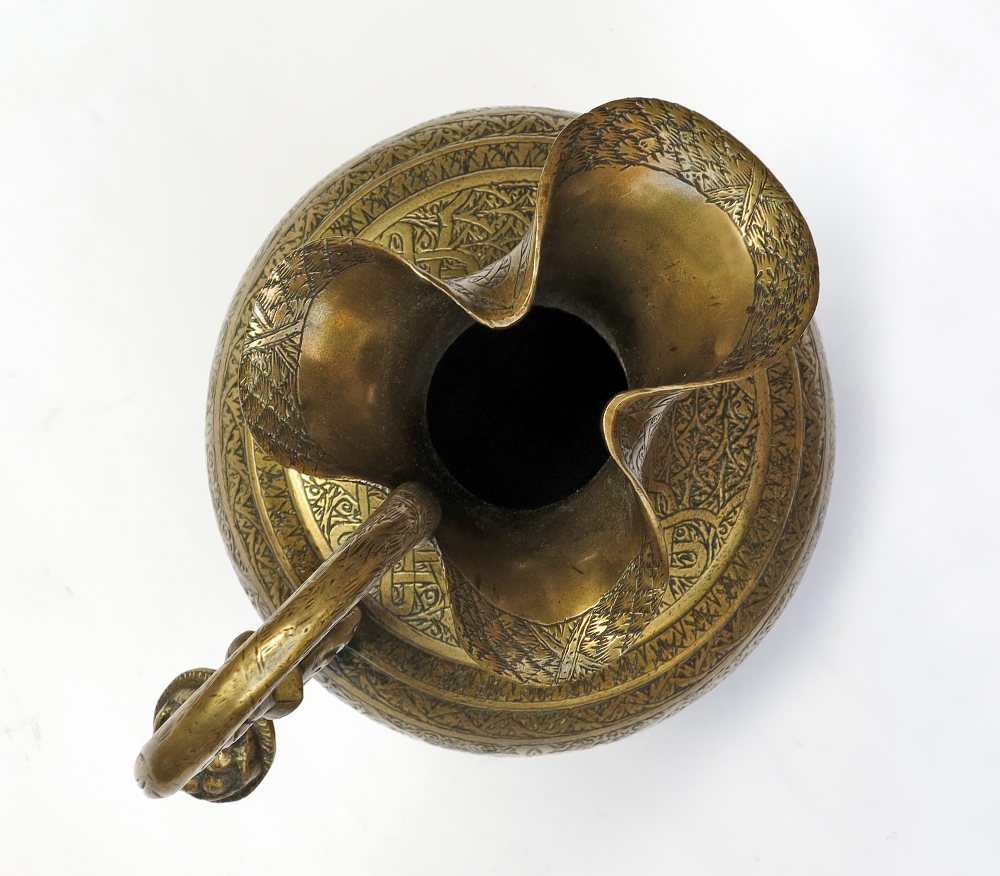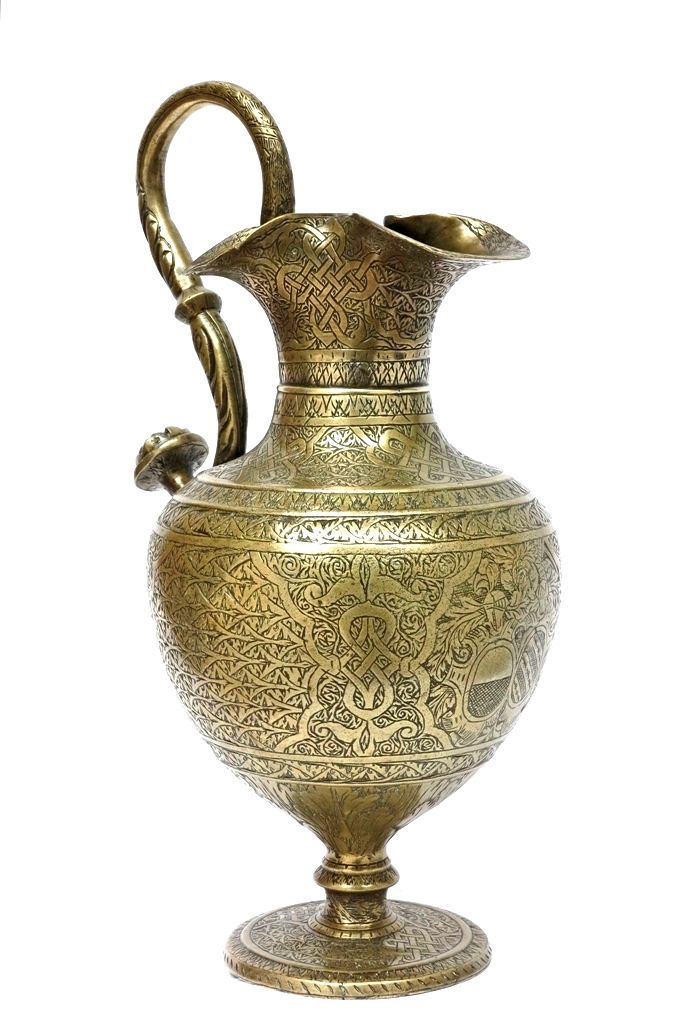
A Refined Venetian Brass Ewer
Richly adorned all over the outer surface, this elegant ewer is a remarkable example of the brass engraving technique, documented in Venice since the 15th century. The shape of the ewer – widespread in the Western world along the 16th century and well known through silver, brass, maiolica and glass examples – is tipically characterised by an ovoid body above a round spreading foot with a protruding central rib, a neck with a slight rib below a moulded trefoil lip and an elegant S-shaped handle which in the present example is modelled with a central knob and a lower finial in the shape of a blossom (or a pomegranate?).

The decorative patterns covering the whole surface of the ewer are clearly derived from the Islamic tradition in a combination of knots, scrolling arabesques, geometric interlaces and palmettes: a scheme absolutely consistent with other brass works made in Venice in those years by local crafstmen used to blend European shapes with Arab ornamentations. The only non-Islamic element is the double shield (crowned by two symmetrical helmets) engraved in the middle of the ewer body, depicting the coats-of-arms of two Venetian noble families – the Azzoni Avogadro and the Brandolini – to indicate that the present ewer was probably made on the occasion of a marriage between two members of the above mentioned noble descents.

Similar ewers are recorded at the Correr Museum in Venice as well as in many other public and private institutions as the Victoria and Albert Museum in London.
References: Eric Turner, An Introduction to Brass, Victoria & Albert Museum, 1982
Venetian workshop
EWER
Engraved brass
Venice
1540 – 50 circa
Cm 17 x 27h
© 2013 – 2023 cesatiecesati.com | Please do not reproduce without our expressed written consent
Alessandro Cesati, Via San Giovanni sul Muro, 3 – 20121 Milano – P.IVA: IT06833070151